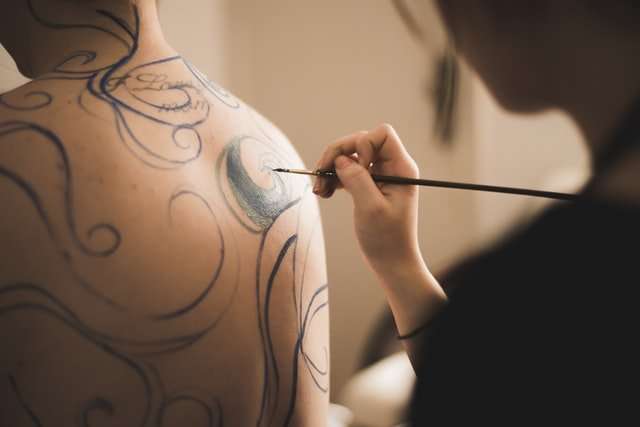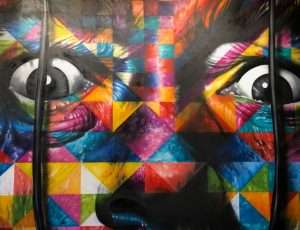Watercolor art is a rather broad term because it refers to the painting medium but also the technique. The medium is water, pigments and binders. Watercolor painting techniques, however, can be very varied and creative. The most popular techniques are, however, the wet-in-wet technique and the dry-in-dry technique.
In this blog you will find tips and tutorials on these techniques as well as information about other watercolor painting techniques such as impasto, wet-on-wet, wet-on-dry, dry brush and others. You will also find information about different types of brushes for watercolor painting, how to use them and which ones are best for each technique. You will also find tips and ideas on how to paint specific subjects or objects like flowers or landscapes.
Because of all its versatility, watercolor can be used to paint a very large variety of subjects. There are many different ways you can apply your knowledge of watercolor painting in different situations by varying your choice of subject matter or your choice of color palette. In this blog you will find articles on how to choose what to paint as well as how to take advantage of the qualities that watercolor has that make it unique compared with other media such as acrylic
Watercolor painting is considered as one of the best forms of artistic expression. This is because it can be featured in a wide range of surfaces such as walls, furniture, and even clothing. Watercolor art is also known as a beginner’s painting form because it can be created by an artist without having to use layers.
You may want to consider watercolors if you want a quick way to create artworks that are easy to clean and less costly. However, you should know that the most famous watercolor paintings are done in layers and not in one simple go.
Tulips painted in watercolor style by Alena Shishkova. The artist used a limited palette of colors like yellow, red, blue and green for easier blending. The artist also used several shades of blue for the background rather than just one shade for color contrast.
Watercolor paintings are very popular with both professional artists as well as beginners because of the following reasons:
Watercolor is a very popular art form today. It has been around for a long time, and has been used by artists since the 1500’s. It is one of the most flexible art forms, and its popularity continues to grow among artists of all ages.
Trying to figure out how to paint watercolor can be a challenge, but with some practice anyone can develop the skill. This blog is here to help you learn some simple techniques to make your watercolors look like works of art in no time at all!
There are many different types of watercolor paints and papers that you can use in order to create your own masterpieces. Many people prefer using the basic (and cheapest) watercolor paper and paints from their local craft store. However, there are some differences between these products and those created by professional artists for professional use. The materials used by professionals are of a higher quality, and therefore tend to produce higher quality results. These materials may cost more than those found at your local craft store, but they will last much longer, as well as produce better results.
Watercolor paintings have been used as a form of art for literal centuries. The colors are gorgeous, and the process is much easier than oil painting. Consider learning how to apply watercolor painting to your own home decorating or artwork.
Now that you know what it is, you may be interested in learning how to do it yourself. The first step is to purchase some watercolors, brushes and paper or canvas that can be painted on with water. The paper or canvas must be primed with a white primer before you start to paint on it. You can find watercolor paper at most art supply stores.
Watercolor is considered by many to be a difficult medium, but once you get the hang of it, it’s just about as easy as it gets for acrylics. Here are some tips and tricks for applying watercolor:
-When applying a wash of color, dip the full length of the chosen brush in the water and then load up on paint from the palette. This allows more paint to come off when you scrub across the surface of your painting. If you dip only a part of the brush and try to remove extra paint by tapping off excess against your palette, you’ll lose a lot of valuable pigment this way.
– Apply washes of
Watercolor painting is a very versatile art that has been around for centuries. It is used in both fine art and commercial art. Watercolor paintings can be found in homes, offices, museums, galleries, and even on the streets.
Watercolor paintings are known for their vibrant colors and flowing lines that seem to magically appear on the paper or canvas. People often confuse watercolors with watercolor pencils or crayons, but there are some distinct differences between the three.
Watercolor pencils and crayons are similar because they use water as an ingredient to make the pigments flow smoothly throughout the wax-based medium. However, pencils and crayons require a mechanical application process while watercolors allow for a more free-form technique.
A watercolor painting has a very unique look that is hard to mimic with any other medium. Watercolors are extremely versatile and can be manipulated with different tools to achieve different looks such as impressionism or abstract expressionism.
Watercolor painting has been around since the Renaissance and was very popular during the late 19th and early 20th century. This is partly because it lends itself to many different subject matters. Watercolor paintings can be serene, dreamy, beautiful, colorful and vibrant. It can also be used in a more realistic style.
Also, it’s one of the most accessible mediums in art to begin with. There are no messy paints or smelly solvents to contend with; all you need is a brush and water, some paper and some paints. So if you’re thinking about picking up a new hobby, why not give watercolor painting a try?
The History of Watercolor Painting
Watercolor painting dates back to early Renaissance times when painters such as Leonardo da Vinci, Michelangelo, Raphael and Botticelli started using water soluble paints on paper. The popularity of this medium remained prevalent throughout the 19th century and into the 20th century until acrylic paints became available and affordable for artists. However, watercolors have made a comeback in recent years due to the abundance of workshops being offered by local art supply stores or through community colleges and universities.
Watercolor art is often associated with Impressionism for its loose paint strokes and soft edges
Watercolor painting is a popular art that, like most types of art and skill, takes practice to master. Watercolor painting is known for its transparency, freshness and elegance. It is used mainly in the areas of fine arts and commercial graphic arts.
Trial and error are the two best ways to learn something new. However, trying something without knowing what you are doing can result in mistakes. In order to get the most out of this article, take some time to read it carefully so you will have a better understanding of watercolor painting before you start. By knowing the basics of watercolor paint, you will be able to make educated choices when purchasing supplies and will have a better idea of how to use them once they arrive.
Watercolors are not just one color; they are basically transparent pigments which means they are mixed with either gum or other natural binders in order to hold them together. The binder allows the pigment to flow or be activated on the paper evenly instead of being blotchy or clumped together.


